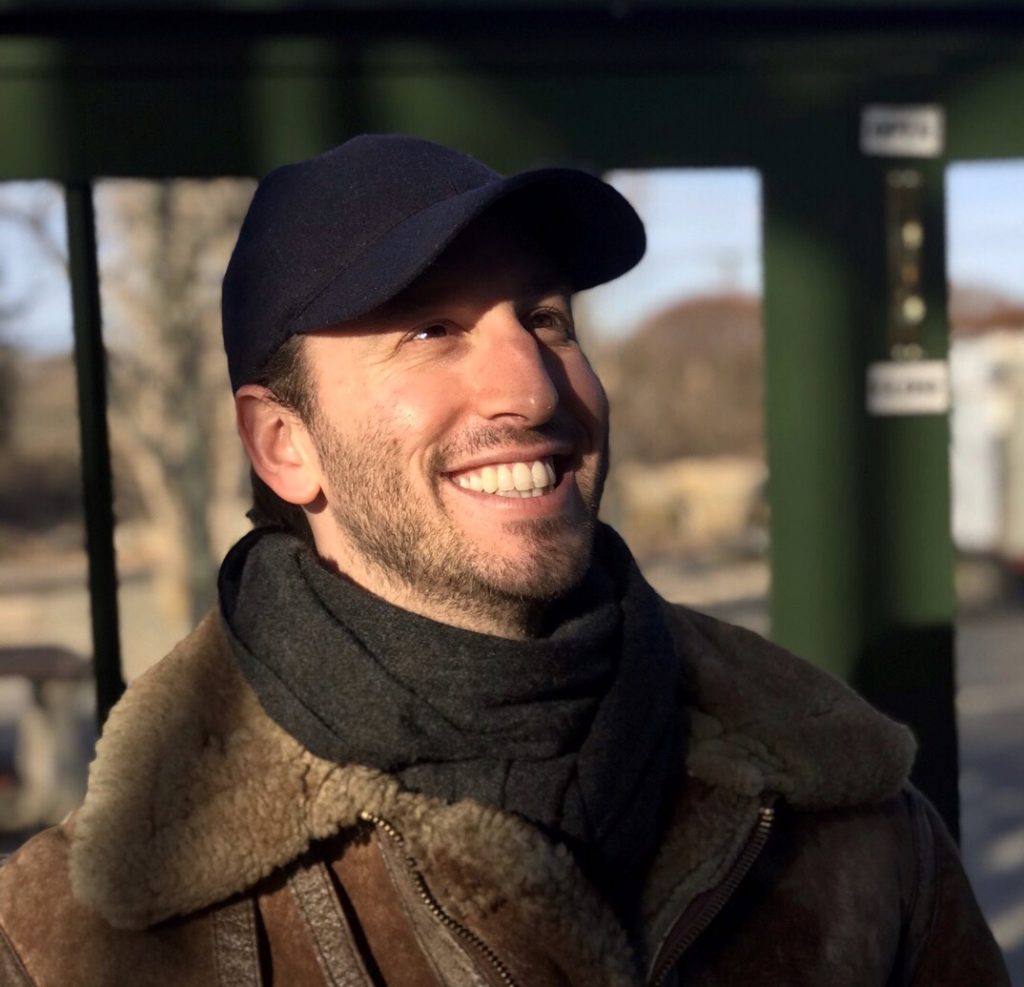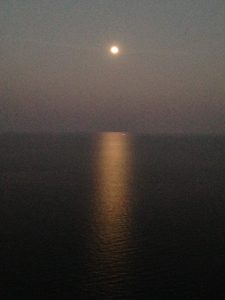BY CHRISTOPHER IMPIGLIA
—
The pandemic forced us all to pause, often in solitude. An unfamiliar, uncomfortable place, even for the writer, social engagement now expected, indeed required, and distractions commonplace, writing a navigation between these, between cameos and posts and clicks of elsewhere, nowhere. Between subsisting and pursuing—or being pressured to pursue—more lucrative things, and the guilt we’re made to feel for engaging in what doesn’t readily generate—at least not initially—the only thing we’re told is of value: money.
Netflix, like most media, did its best to invigorate the stillness, force-feeding content, the play button obsolete, the right to choose under scrutiny, algorithms stifling agency, self-doubt fueling algorithms; we trust in them, a safer bet than ourselves. Suggested viewing: not a suggestion, but a necessity, an inevitability.
Season after season after original movie blare on. Every Avenger and their personal trainer will soon have their own must watch show. Streaming platforms have grown into all-powerful megaliths, cementing themselves in the stillness, feeding off our fragility. New ones have absorbed whatever was left lingering in their accessibility, fresh subscriptions and devices required. Add-ons have added to the equation, the extra dollar per-month necessary to elevate us beyond the base subscription and its subscribers. Or simply to rejoin the masses, to not be left behind. Even as in parts of the country, including my own, vaccination has led to re-openings, and maskless faces, scowls—we’ve forgotten how to smile—have returned a sense of normalcy, with variants raging in the background and fresh closures perhaps looming—we turn up the volume, scroll through our phones, try not to think about it—we find ourselves unsure. We hesitate with our greetings—a hug? Cheek kiss? Elbow? Our fragility persists. We crave the ease of our couches. Of content. Our addiction pulsates.
Like many, I retreat. And yet, it’s the stillness I seek. The now familiar discomfort I believe all of us should embrace lest we lose ourselves completely, drown in overstimulation, the ignorance it breeds; the one positive I can draw from the pandemic, its solitude, is that, to some extent, I was able to reclaim myself, forced to. Consuming has its limits. It offers temporary respite. Herein lies the illusion that allows capitalism to endure. I was able to reclaim my world shrunk to a more manageable size: a living room, bedroom, kitchen. A running track. To do what we’ve kept—increasingly—from doing: step back, sit down, and think. Think in the purest sense: about life and by extension death, which has come to sound, unfortunately, like something reserved only for the bygone romantic or emo.
No longer cast into the surging current of a dreaded, endless commute, rapt by overlong meetings and task after endless task, the need or impulse to be productive or social or sociable every second dulled, the gaps in-between widening, no longer filled as they once were, in a paradoxical attempt to rest the mind in its rapture, my innermost self resurfaced. I allowed it to, switching off screen after screen or simply growing bored of them. Books becoming better, more real, company. Welcoming stillness’ strands: boredom, absence, silence. It came in waves, the self, an oft tortuous crashing, ebbing, and flowing.
I was forced to confront it all: the smothered, bottled up, half-forgotten, and ignored, and I have strived, as a writer probably should, to document, summarily, in our age of distraction, what I have gleaned in those difficult moments. What I can only hope will help the reader and fellow thinker find their own stillness. Their own selves. Persist in this necessary state even when eruptions of thought cloud and spill. Singe, engulf, overwhelm.
Life, Calvino notes, is a contemplation of memory. Memory: an unreliable, ever-changing thing that reinvents itself in order to fit your current state physically and emotionally. Where you are in your travels. In your life’s journey.
So that painful longing you feel for someone who inflicted so much pain, who you were certain you were meant to lose; those fragments of your past that haunt you in lulls, tempting you to flood yourself with image, sound, and drink, with oblivion, to dive into motion, shake yourself free, taught, explicitly and subliminally, that a moment of contemplation is a moment lost, to consume, consume; in your dreams and nightmares, buried in your subconscious, in your primal inability to let go, to forget, once an advantage in a primal world, now a hindrance; those words you still hear spoken long ago in voices once music to your ears, now shrieks, growls, wails, poison; words and voices that suffocate, strangle, make your best attempts at soaring a slog through the mud, to which you never replied, but perhaps should have, or did, weakly, wrongly, a better response only later on your tongue, when it was too late: trust none of it. It’s all but what you—we—have been designed to fear: innumerable negatives, some of which we can name: uncertainty, disappointment. Unfulfilled goals, guilt, shame, doubt, regret … harnessing memory, corrupting it, undoing the reality it never intended to record.
This: a realization that might sooth your torment. Allow you to reinvent memory again, sculpt it into idols worth worshipping, into inspiring recollection—feed off it. Let it inform your art, made no longer for catharsis, wet with tears, aflame with anger, but with pleasure. For pleasure. For understanding, exploration, and beauty. All art should aspire to beauty: what all can behold. Into nostalgia—you gaze off, out, back.
A smile comes to your lips. You reach out to an old friend—a real friend, which means a shared past, a perhaps difficult conversation, a confrontation you avoided—nervous, throat dry.
“Of course I remember you,” they say.
They remind you of who you were. Who you are: flawed, like anyone else. Perfect in your imperfection, to tempt cliché, which hold a certain universality, timelessness. Appropriate. Loved regardless. Like anyone else: capable of being forgiven. Of forgiveness.
“Redemption.” The word rings in your ears.
Mistakes and successes alike, you now see: glittering gems.
Another realization: you will possess only very little in your lifetime. Considering the vastness of the world, the universe, which only continues to expand, and the fleetingness of your existence, there is so much more you will never have.
Here I again draw from Calvino, who I keep by my side.
Invisible cities the only ones we can now safely occupy.
Everything you possess, therefore, everything you can possess, is precious. As precious as the unpossessed and unpossessable; the grail isn’t meant to be grasped, sipped from. The Fisher King: leave him be. Let him heal his own wounds. Like El Dorado, like fame and perhaps fortune, like the edges of the universe, of consciousness: it’s meant only to be pursued.
So take hope, traveler. Continue to retreat. To seek. Lose yourself in unfamiliar, uncomfortable places. Physically: when doors open once more. Emotionally: incessantly. Continue to possess—let moments pass, become memory. Let them acquire that same sacred sheen as miracles. To choose—let memory dictate your choices. Let them be your guide, your lantern, bright with ambition. Continue to entangle yourself in your surroundings, your limbs, like your roots, those of the trees. Your limbs the skyscrapers, the satellites, the reaching, striving of all others. The present: a tangle of all the decisions everyone has ever made.
Trust yourself. Be content with yours.

—
Christopher Impiglia is a writer from Bridgehampton, NY. He also adjuncts and edits art books. He received an MFA in Fiction from The New School and an MA in Medieval History and Archaeology from the University of St Andrews. A Finalist in Nowhere Magazine’s 2020 Spring Travel Writing Prize and the 2019 Hemingway Shorts Contest his words have otherwise appeared in Columbia Journal and Entropy Magazine, among others. Follow him on Twitter and Instagram @Impigliato.
![[PANK]](http://pankmagazine.com/wp-content/themes/pank/assets/images/pank-logo-large.png)

